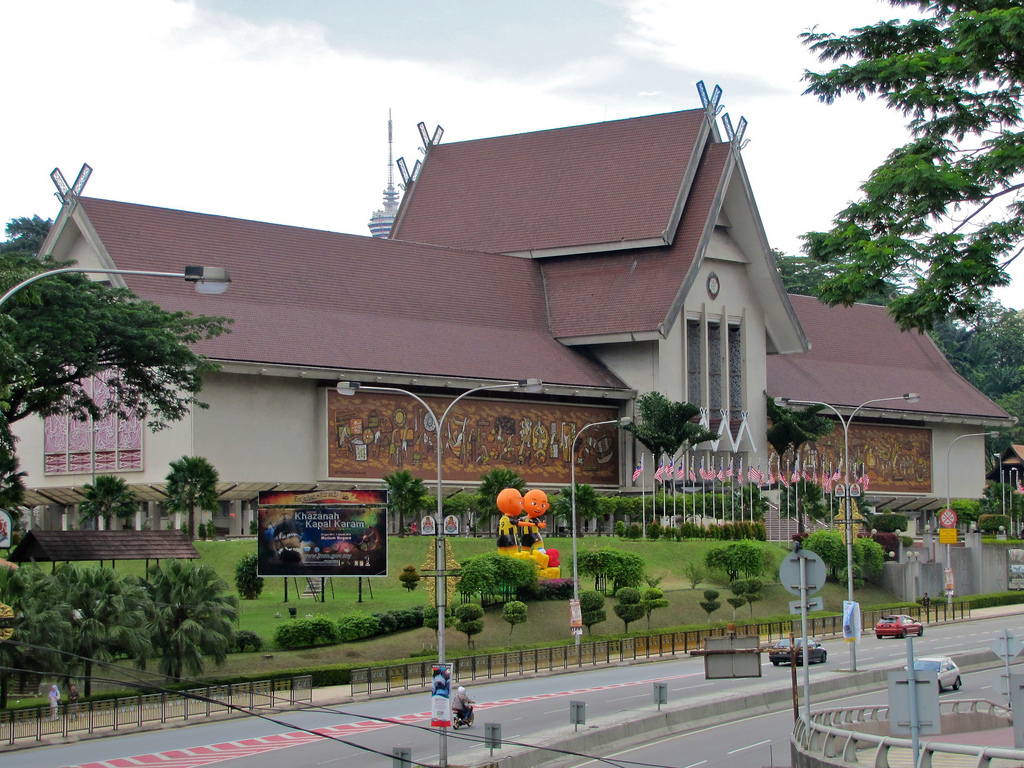 |
A million years of Malaysia in an hour and a half? No way! you say. But stalwart MCG members Rose Gan, Pam Currie and Janine Williams pulled it off capably, guiding us on a tour at the National Museum on March 16. All three are trained Museum Volunteers Malaysia guides as well so they put on their docent hats and away we went. Gallery A, dealing with Prehistory, takes us back a million years to the land mass known as Sundaland, which covered present day Malaysia and Indonesia and was joined to the Asian continent. Over time as the seas rose, today’s archipelago emerged. The greatest biodiversity and the world’s oldest rain forest are found here. 72,000 years ago a super volcano in Sumatra, Toba, exploded in the biggest eruption ever, which covered the whole of Southeast Asia with ash. |
| A tall jar of fine white dust collected in present day Malaysia on display is testament to the long lasting effects of such a cataclysmic event. The eruption coincided with the onset of the last ice age and as a result the environment, climate, flora and fauna all changed. Eventually the coming of man resulted from the outward settlement of SEA and so began the constant change characteristic of the region.
The stone culture of the Paleolithic Age is reflected in the single sided stone tools, which served many purposes. A homo erectus of the Mesolithic period is Perak Man, whose replica remains are featured. |
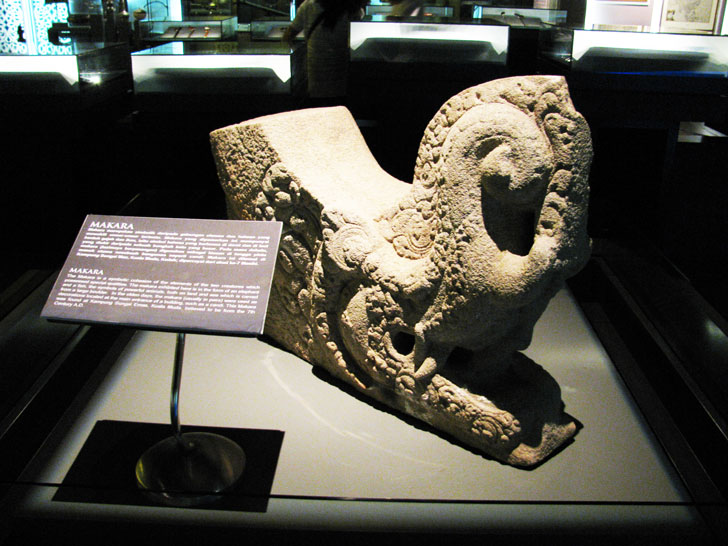 |
|
He was about 50 years old and was handicapped since one side of his body was shorter than the other. His original remains have ‘balik kampong’ and have been returned to the Lenggong Valley in Perak. The Mesolithic period is marked by cave-shelters, and cave paintings along with more advanced and varied tools used by Hoabinhian hunter-gatherers. Evidence seems to suggest that culture and knowledge came out of Africa by way of India, as pottery shards show patterns that are similar to those found on Indian pottery. The Neolithic period, about 4,000 years ago, showed the use of fire and pots that were apparently made inside baskets. Very small stone points were also found indicating advancement as a need developed for more specific tools. The coming of the Metal Age at the end of the Neolithic was evidenced with the arrival of fully formed bronze items from external sources. Trade items like drums and barrels were often buried, which enabled them to survive, while iron corrodes in the ground. Evidence of the beginning of the knife culture is the axe called tulang mawas, ape bones, which was made locally. |
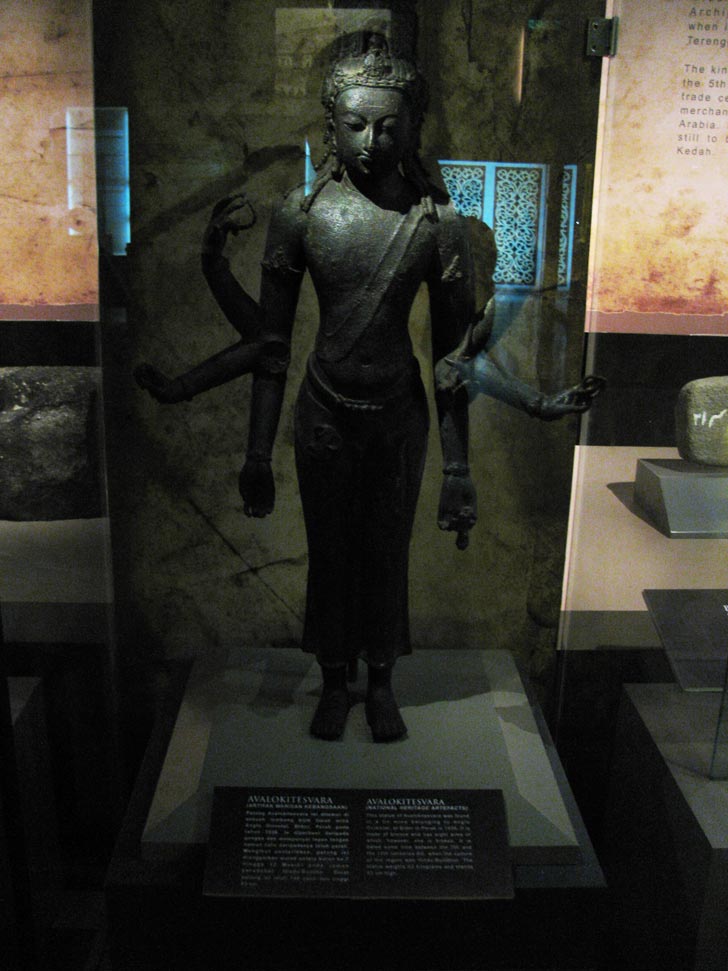 |
|
Early trade from China, India and Arabia brought things such as glass beads and jewelry as well as new ideas. Malaysia became Indianised with the coming of Hinduism. One of the earliest Hindu/Buddhist sites outside of India was the Bujang Valley where temple remains have been found. A beacon for the traders from India is Gunong Jerai rising over the coastal plain which could be seen from out at sea. A massive trading site grew up in the area, which exported iron goods to India and even Japan. In 1025 the emperor of the Tamil Chola Empire from southern India invaded and conquered Kedah, defeating the Buddhist Srivijaya dynasty there. Eventually this led to the rise of Malacca and many sultans of the Malay World have descended from the Cholas.
The next gallery, B, deals with the history of the Malay Kingdoms. The doorway is a massive carved wooden edifice requiring you to go up a few steps and then down to enter. This in turn ensures that you enter with a bowed head displaying respect. Inside a makara, a sacred creature carved in stone from Hindu mythology, greets you. Formerly used to flank doorways, this creature embodies an elephant and a fish, and so represents land and sea, yin and yang, essentially balance. Further on is a delightful, precious bronze figure found in a Perak tin mine, Avalokiteshvara from the 8th or 9th century. Her eight arms branch from her elbows and she would be considered a Buddhist bodhisattva, but closer inspection reveals Buddha in her topknot dressed like Shiva, a Hindu god. |
|
|
Early periods of Malaysia’s history are often referred to as Hindu or Buddhist periods but she represents an amalgamation of the two religions that evolved in Southeast Asia and so is literally Hindu/Buddhist. In the 1400s Malacca was the site of the greatest trading state in Southeast Asia. It was a cosmopolitan centre, open to everyone, that sat on sea roads of maritime trade between Arabia, India and China. It did even better as a Muslim centre of trade as wealth was channeled through Malacca through a fair levy system. Food was available to all, there was a fire brigade and pirates were controlled. Many icons of royal Malay houses are on display in this gallery including the use of yellow as the royal colour and umbrellas which both came from the Hindu period. |
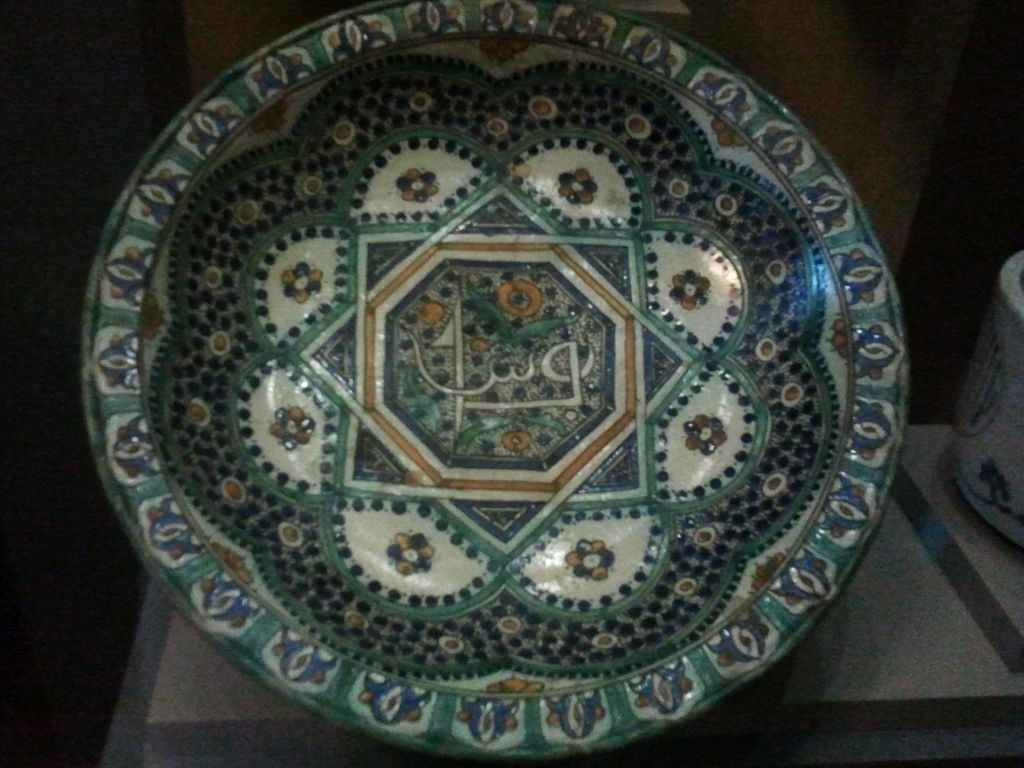 |
|
The kris, which probably came from Indonesia, is found all over Southeast Asia, part of the shared culture. Ergonomically perfect, the wavy blade represents the naga or snake spirit. The kris handle which looks like a demon figure in Bali, was stylized in Islamic areas. Another element of Malay culture is the betel set used by every level of society from the sultan to the farmer, as everyone chewed betel. The sets were part of every home and a visitor was always offered the ingredients contained in the betel set so that he and the host could partake together. Chinese traders had been dealing with Malacca since early on, and with the Malacca Sultanate since the 15th century. Artifacts like Nonya ware ceramics, jewelry and furniture have all come from China. Needless to say Malacca not only had the attention of SEA traders, but was soon under the eyes of European traders. |
|
|
The Colonial Era is displayed in Gallery C. It was the Portuguese who had their eyes on Malacca and their initial interest in trade, was reciprocated by the Sultan of Malacca. Eventually the bad feelings in Europe shared by the Spanish and Portuguese against the Muslims, whom they wanted to convert, reached Southeast Asia and soured relationships. In 1511 Albuquerque arrived with a flotilla and demands that the Sultan refused to meet and fighting broke out. Malacca was defeated, Sultan Mahmud Shah fled, the Portuguese were in control and they loaded a treasure trove onto the Flor de la Mar to be sent back to the Portuguese king. |
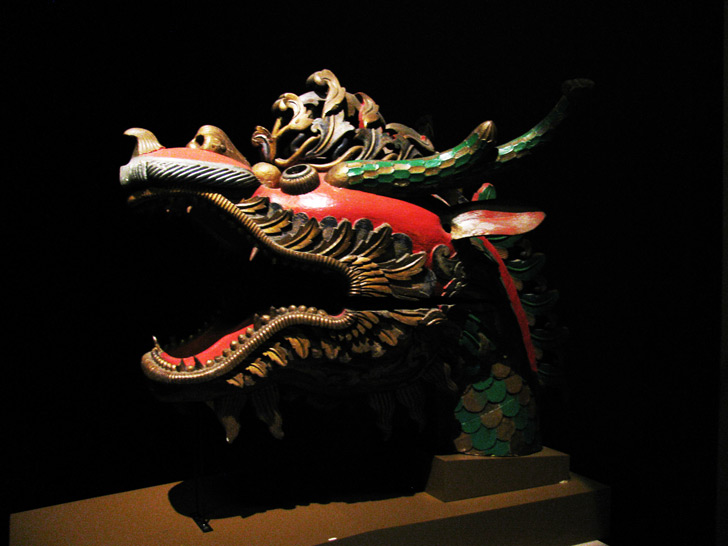 |
|
The ship went down off Sumatra, but the Portuguese erected the fort, A Famosa, a part of which is still standing today, as under the British, Raffles saved the gate. A Portuguese official described the attraction of the port when he said, “Whoever is lord of Malacca, has his hand on the throat of Venice.” The Portuguese remained in Malacca for 130 years although there were constant skirmishes by the surrounding Malay sultans trying to regain their territory. The next European power to covet Malacca, were the Dutch merchants of the Dutch East India Company who wanted to establish a trading monopoly. |
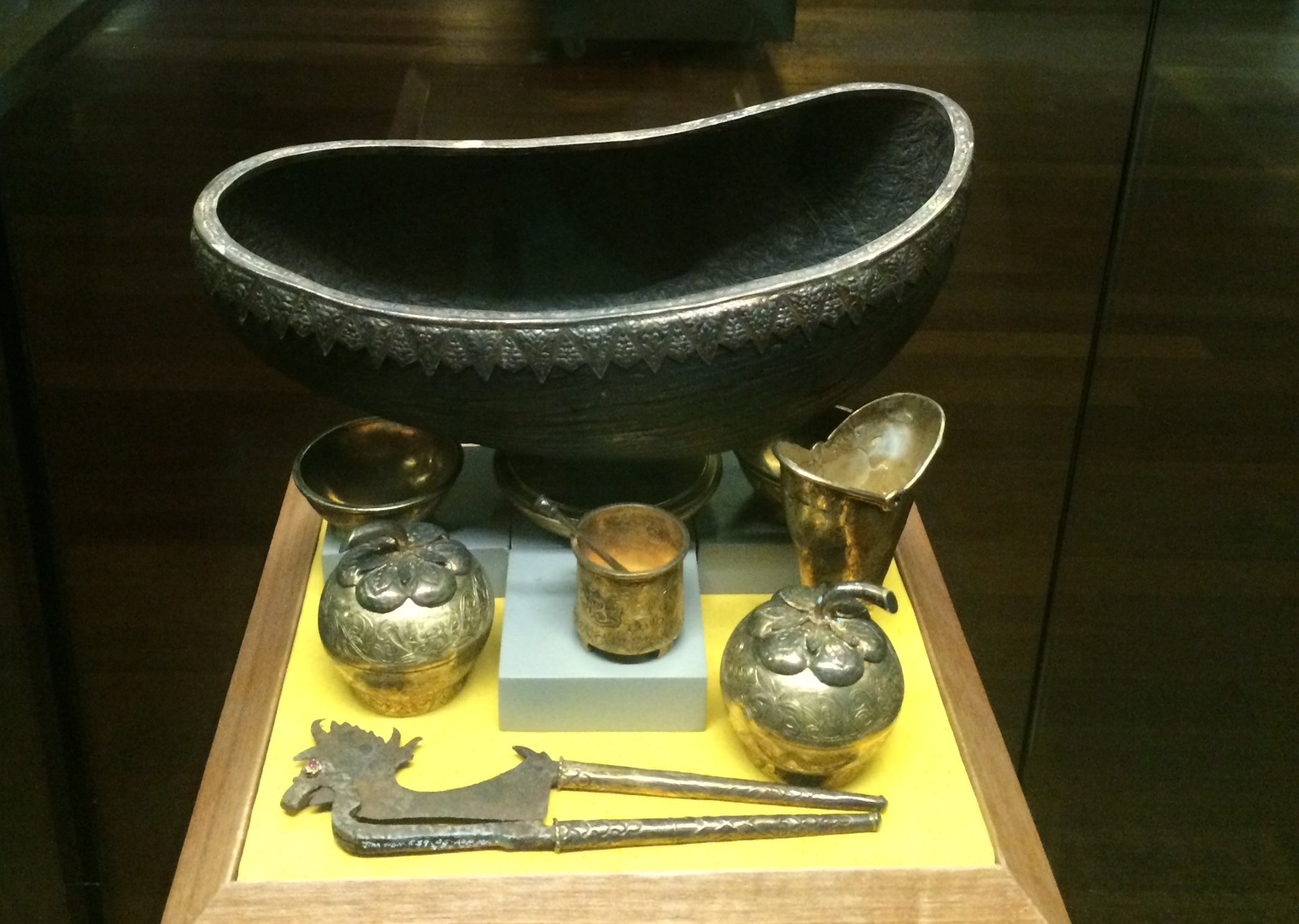 |
|
They had no religious motives at all, but rather wanted to eliminate competition for Batavia (present day Jakarta), which they were developing in Java. Initially, the sultans thought they could work with the new power and the Sultan of Johor aligned with the Dutch, but it was soon found that the colonials were only after money and were very cruel. Although the Dutch remained in Malacca for roughly 160 years, trade declined under their rule. Eventually the Dutch East India Company folded in 1800 partly due to corruption, and control of the territory was taken over by the Dutch government. Towards the end of the Dutch regime the British were in control for about seven years due to shifting alliances during the Napoleonic Wars in Europe.
The latecomers on the scene were the British who had gained Malacca in the Anglo-Dutch Treaty of 1824 in exchange for Bencoolen in Sumatra. During their time they introduced the language, culture and education of Britain and brought people into the system. They put up an infrastructure, which generally worked as opposed to the Dutch in Indonesia who basically destroyed the culture in their quest for gain. The British already had settlements in India so they didn’t want land but wanted ports. They needed a base in Southeast Asia and Penang was too far north for trade. Later the British found the port they wanted on a swampy island, which became Singapore.
Trade in the 19th century supported industrialization as world powers were looking for resources, among them tin. The Tin Wars in Perak in the late 19th C among the rival Chinese secret society mining groups led to the Perak Treaty of 1874, by which the British would administer the Malay states in all respects except the religion and customs of the Malays. This opened the door to the British control in the region, forming the Federated Malay States. In 1909 administration of the northern Malay states of Kelantan, Terengganu, Kedah and Perlis passed from the Thais to the British, which became the Unfederated Malay States. To the east Sarawak was given to the Brooke family and after four generations returned to the British. Sabah, which was important for logging, was given to the British after World War II. The economy of the region became commodity driven with rubber, tin and oil palm being in demand. As the demand for resources soared, the infrastructure needed manpower. The British built railways bringing in workers from India. India also supplied workers for the burgeoning rubber estates, the growing police force and the evolving civil administration. Chinese workers were brought in to handle tin production. This influx of population was the aftermath of colonialism. The Japanese occupation was a dark period in Malaysia’s history, which began in December 1941, coinciding with the bombing of Pearl Harbour. The attack came from the north, with Japanese soldiers landing in Kota Bharu and then moving south to complete their invasion by January 1942. The biggest lesson of the capitulation was the realization that the white man could be defeated. This changed the mindset of the population as the obvious question was, why can’t we take our country back? The British returned to a changed Malaya after World War II.
|
|
| The last gallery D deals with Malaysia Today. The British had already set the colony on the road to independence. Through the introduction of schools for Chinese, Indians and Malays and the teaching of reading and writing the seeds of independence were sown. Teachers from China were sometimes communist and so the idea of communism versus the British was introduced. There was a communist insurgency in the country that lasted till the 1980s. The guerrillas were generally based in the jungles and were sustained by the villagers at the forest edges. The concept of “new villages” was introduced in the 1950s to break this pattern of support, which was frequently coerced. Education, health services, electricity and piped water were provided to attract the people to the projects. Villages were set up inside a barbed wire guarded perimeter and farmers went out during the day to work their crops returning before the nighttime curfew. Although this was definitely a guerrilla war fought between the communist insurgents on one side and Commonwealth armed forces on the other, Lloyd’s of London Insurance would not cover the losses of the rubber and tin industries had it been called a war. | 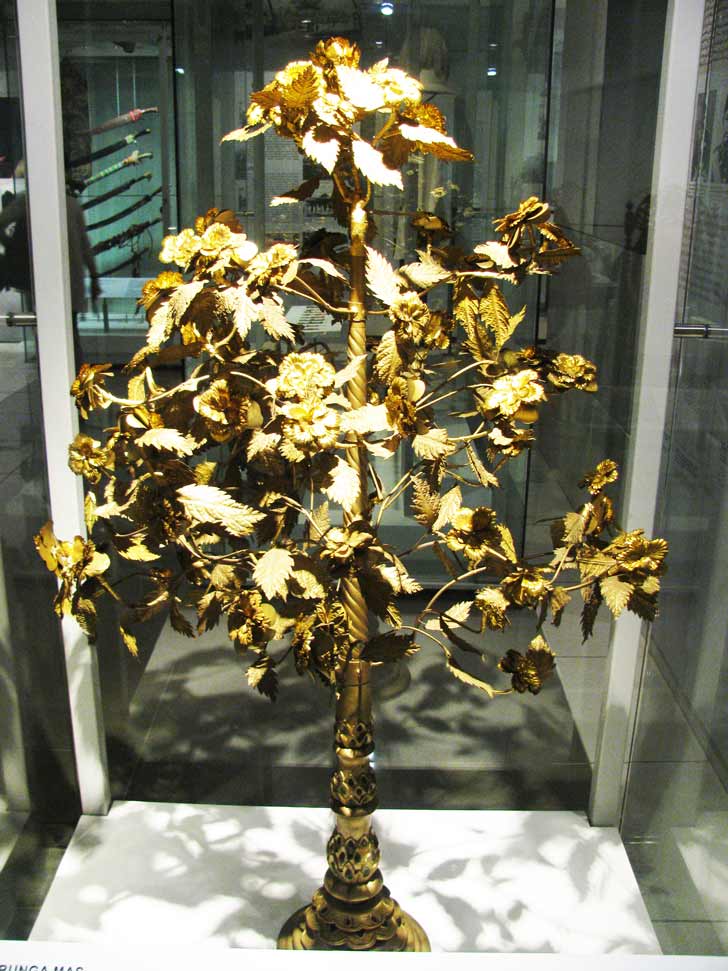 |
|
So the captains of the two industries pushed for the term emergency. The Malayan Emergency lasted from 1948 to 1960. Following World War II aspirations for freedom from the British were felt among the people of British Malaya. In 1948 Tanah Melayu, the Federation of Malaya, was formed under the British, consisting of the peninsular states. To further the aim for independence, each racial group formed a political party. The United Malays National Organization, the Malayan Chinese Association and the Malayan Indian Congress formed a coalition called the Alliance, forerunner to the Barisan National. The first Malayan General Election was held in 1955 and won by the Alliance led by Tunku Abdul Rahman. Part of their campaign manifesto was to achieve independence within four years. Negotiations with the British resulted in independence in two years. On August 31, 1957 power was handed over at a ceremony at Stadium Negara where Tunku’s proud declaration of “Merdeka!” (independence) seven times was enthusiastically echoed by all those present. As a constitutional monarchy Malaysia has an Agong (king) elected by the sultans from among themselves every five years.
Malaysia, consisting of Malaya, North Borneo (Sabah), Sarawak and Singapore came into existence in 1963. Indonesia violently opposed the establishment of Malaysia as a neocolonialist plot and entered into a period of armed conflict with the new nation from 1963 to 1966, mostly in North Borneo. The Philippines also opposed the inclusion of North Borneo claiming that the territory belonged to them. Negotiations eventually settled both disputes. However by this time, Singapore became restive and in 1965 Tunku cut the strings and Singapore became an independent state.
Perhaps the end of the hour and a half tour came just before the end of Malaysia’s history, but all of us learned a great deal, even long time residents. We are all most grateful to our three well-informed guides. Their knowledge and passion and pleasure in sharing made it a most worthwhile morning. Our thanks go to Rose, Pam and Janine.
Leslie Muri |
|




